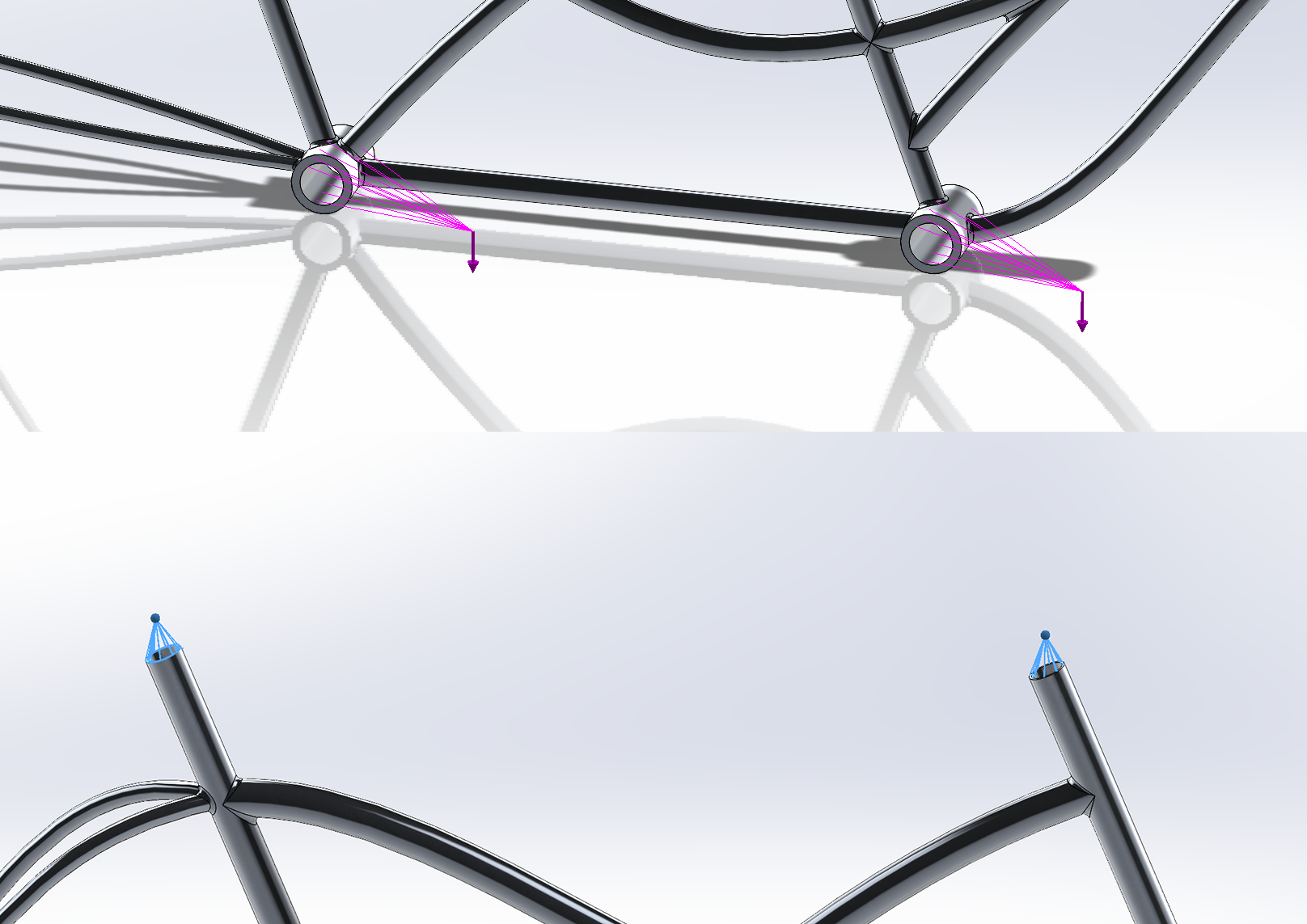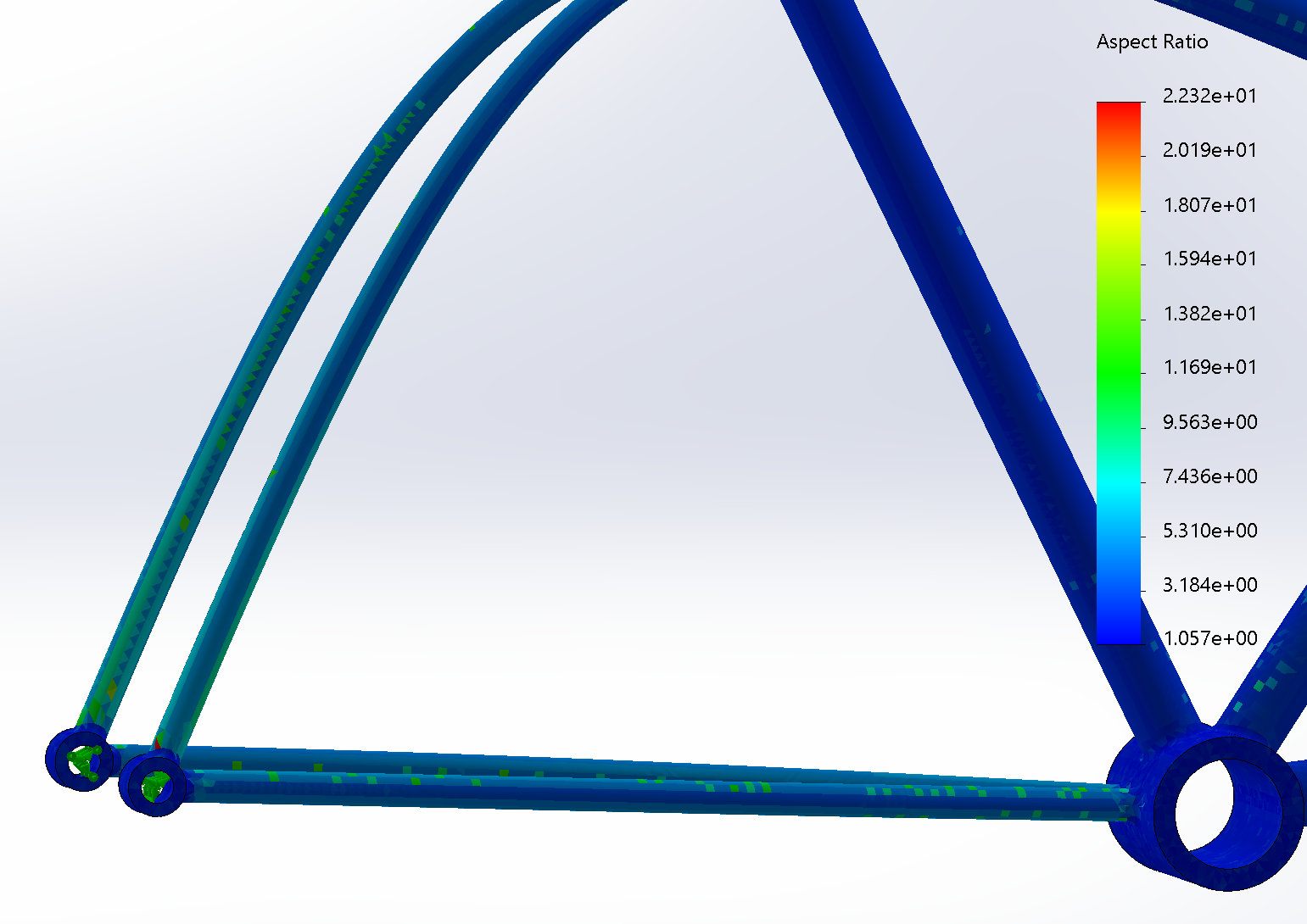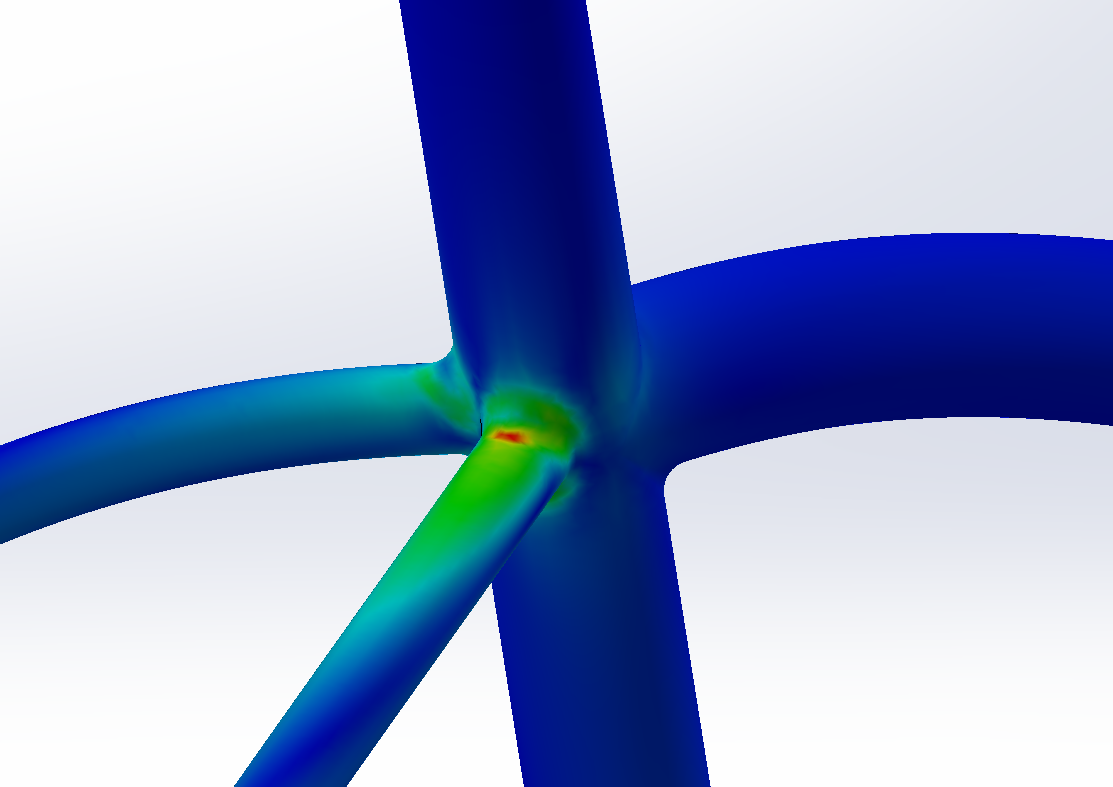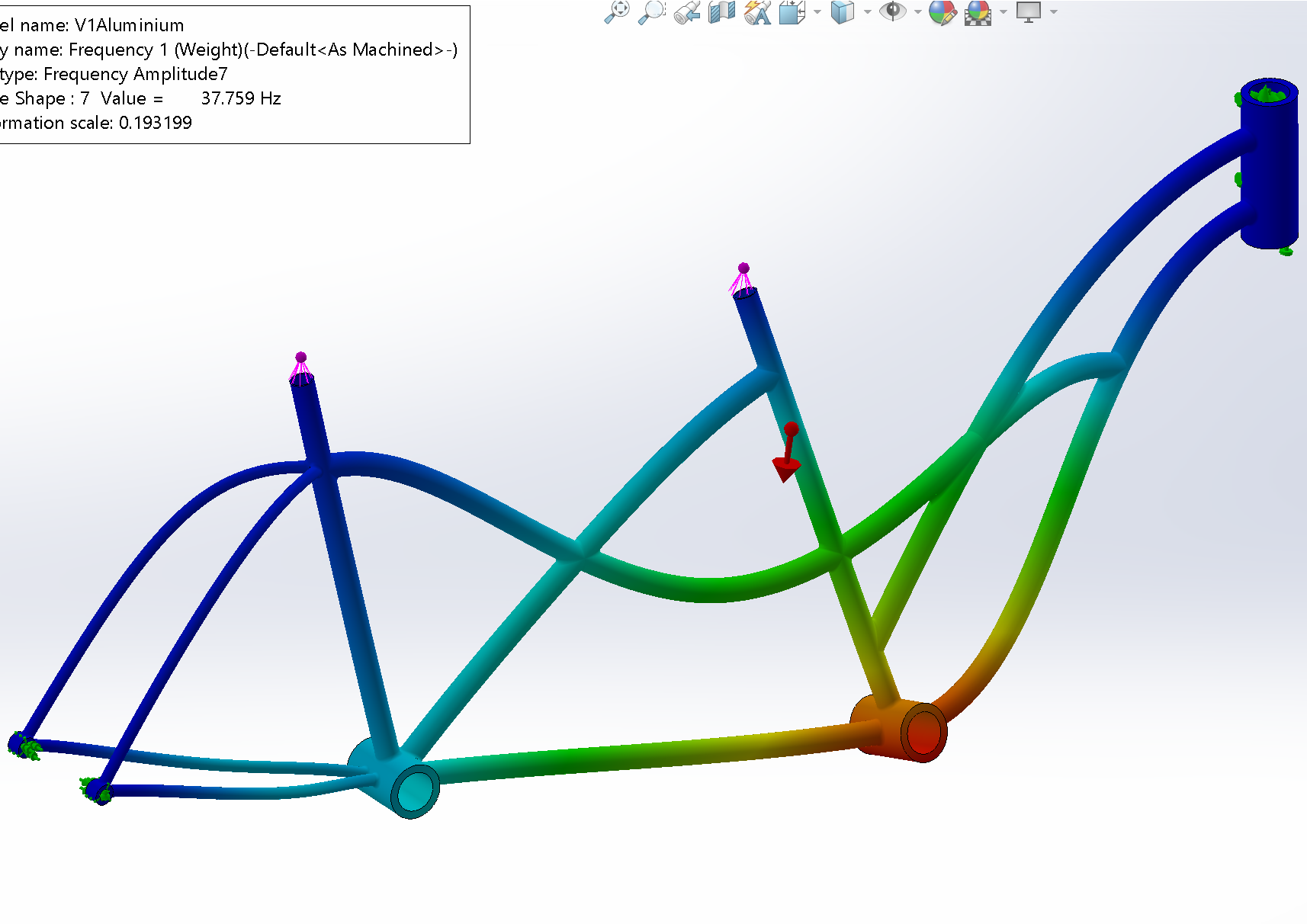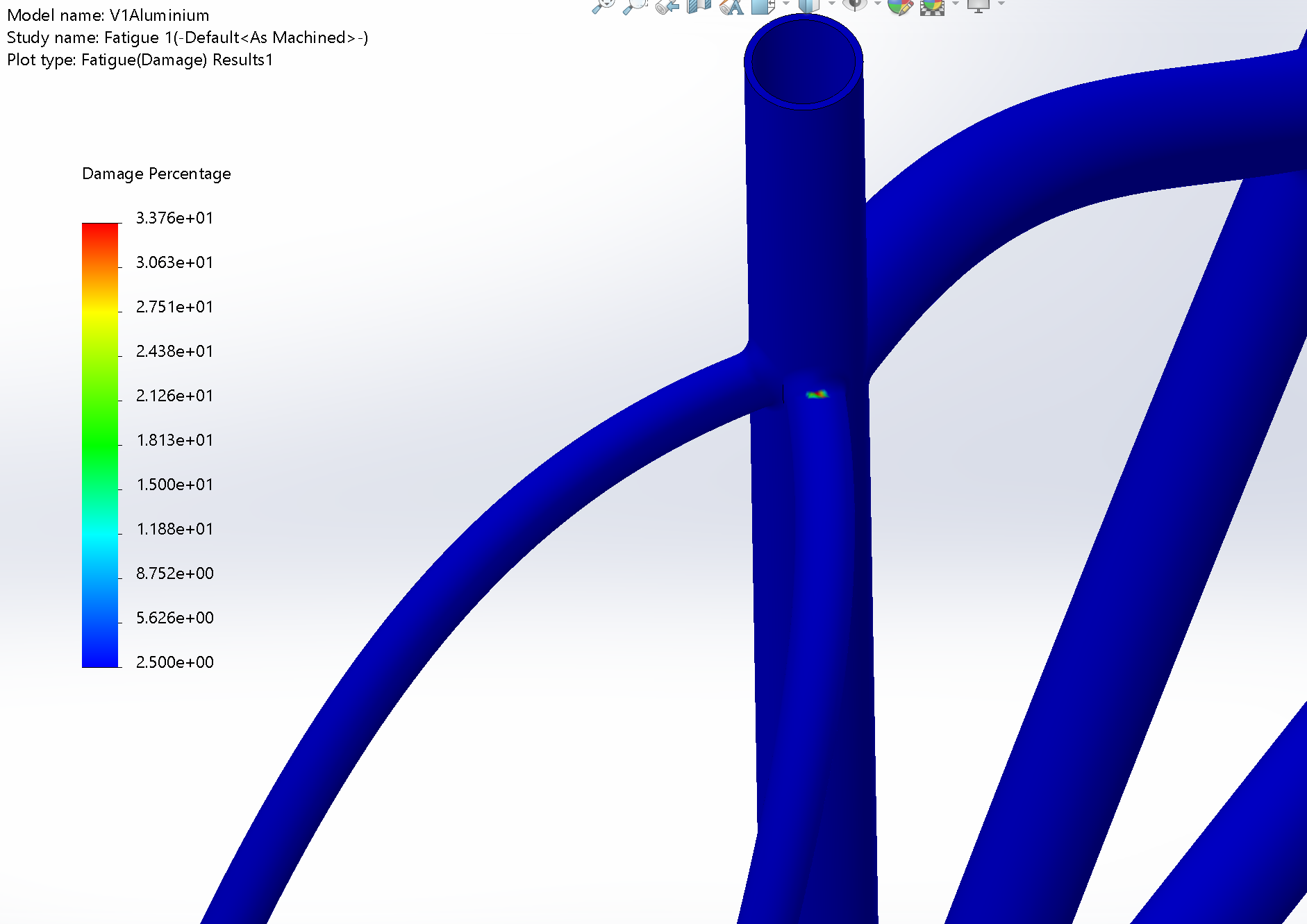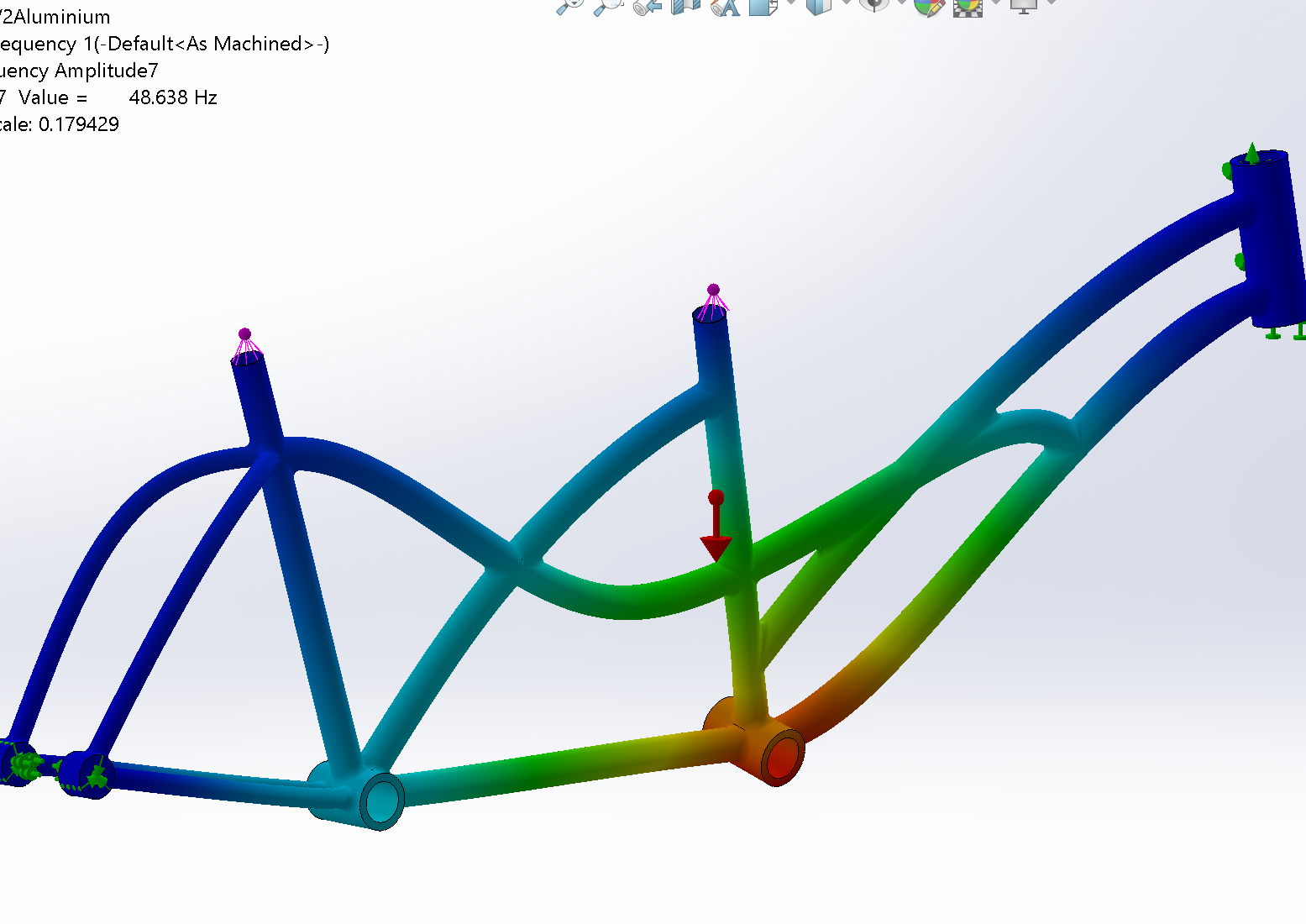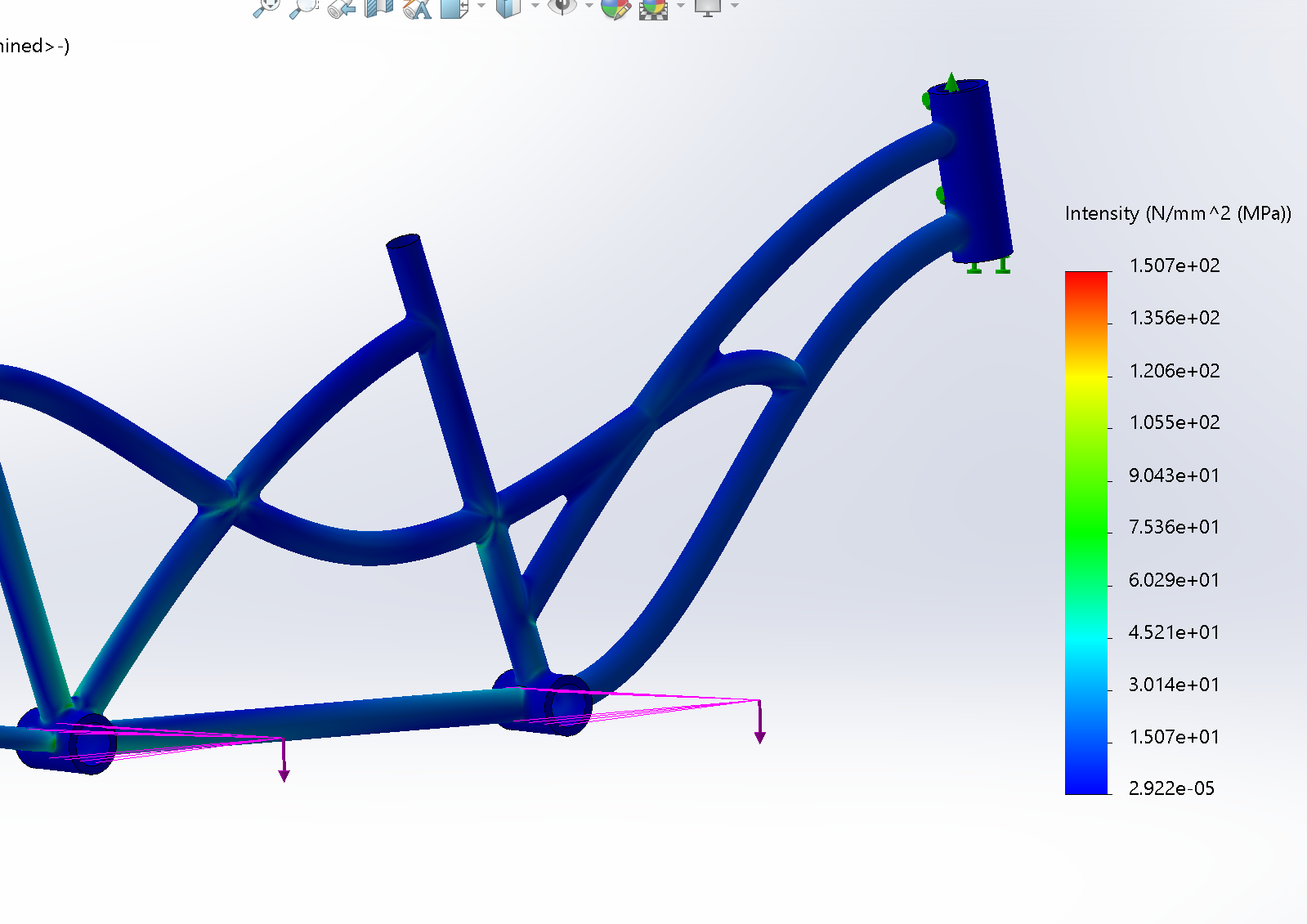Bike Frame FEA
Assignment
This was undertaken as coursework for part of my 'Finite Element Analysis' module. We were tasked with creating a lightweight tandem bicycle frame using finite element (FE) methods to inform our designs, ensuring that; the frame's natural frequencies were larger than 30 Hz to avoid discomfort due to whole-body vibrations, and its effective life was at least 10 years (equivalent to 1 million loading cycles).
Outcome
Having designed the original bike frame, I used FE methods to check whether my frame met the natural frequency and fatigue life criteria, trialling two separate materials (Aluminium & Titanium). I then used the FE theory to determine how the frame's fundamental frequency could be increased, and thus improved my original design, increasing the fundamental frequency from 37.8 Hz to 48.6 Hz after one iteration.
This demonstrated my ability to; develop accurate FE models, perform mesh refinement studies, perform sanity checks, determine fatigue life of structures, and determine and improve natural frequencies of structues.


